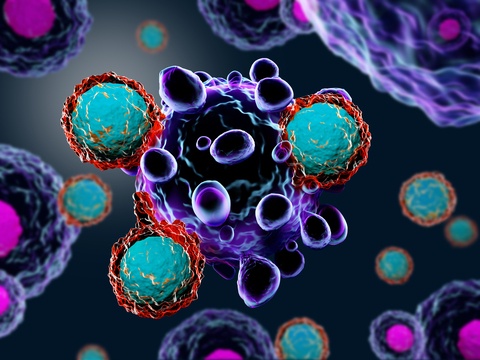Bacteria Linked with Mesothelioma Outcomes

Scientists have found a connection between the bacteria found in malignant pleural effusions (MPE) and cancer diagnosis and prognosis.
This study published in Scientific Reports compared the bacteria from MPE with bacteria from other types of cancers, including mesothelioma. The goal of the study was to link bacteria profiles with cancer outcomes.
Treatment for Malignant Pleural Effusion
Malignant pleural effusion is a type of cancer that affects the area surrounding the lungs. The pleural cavity is a space between the lungs and the chest wall. In MPE, fluid accumulates in this space. This fluid contains cancer cells, immune cells, and other substances that are produced by the cancer.
The buildup of fluid can make it difficult to breathe and cause discomfort. MPE is often a sign that the cancer is more serious, and that the patient’s outcome may be worse.
MPE can be a complication of mesothelioma. Mesothelioma is often caused by exposure to asbestos. When asbestos fibers are inhaled or ingested, they can become embedded in the lining of the lungs and cause irritation, leading to the development of mesothelioma.
Treatment for MPE in mesothelioma patients typically involves draining the fluid and treating the underlying cancer.
Bacteria Linked with Cancer Outcomes
The researchers in this study collected 165 pleural fluid samples from different types of patients, including those with lung cancer and mesothelioma.
They found that there were differences in the bacteria found in the pleural fluid of patients with different types of diseases.
They also found that certain types of bacteria were associated with better or worse outcomes for patients with MPE. For example, patients with MPE from lung cancer had more oral and gut bacteria, while those with mesothelioma had bacteria commonly found in the mouth and gut.
These findings could lead to more studies on how the bacteria found in MPE affects cancer outcomes.
Source:
Kwok B, Wu BG, Kocak IF, et al. Pleural fluid microbiota as a biomarker for malignancy and prognosis. Sci Rep. 2023;13(1):2229. Published 2023 Feb 8. doi:10.1038/s41598-023-29001-4. https://www.nature.com/articles/s41598-023-29001-4





